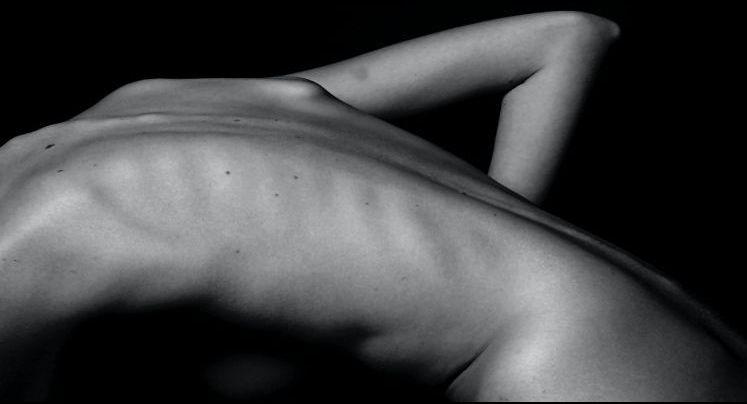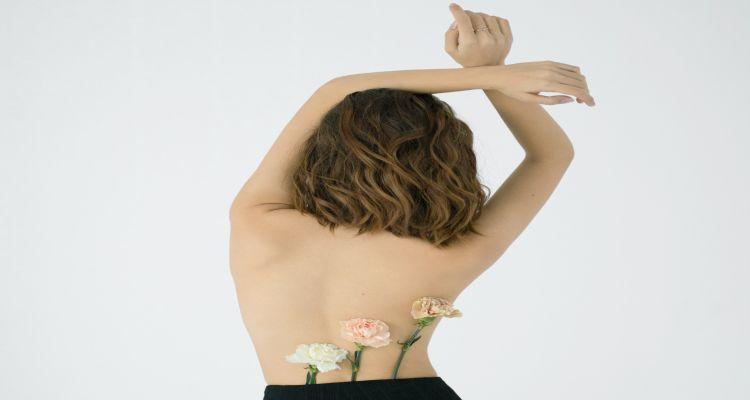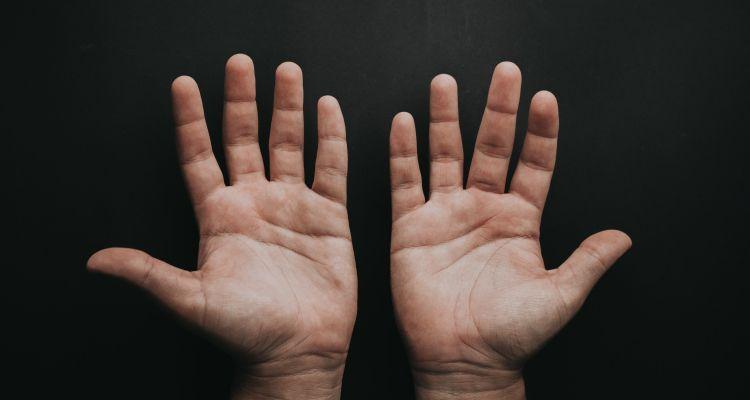
Sunburn - symptoms, duration & what helps?
Updated on 02. November 2023
The first spring sunshine or the holiday sun, sunburn can develop quickly without protection. The discomfort, such as redness and pain, is very unpleasant in the case of severe burns. What can be done against sunburn so that the red face or the itching on the affected part of the body quickly disappear?
Sunburn Brief overview:
- Causes: UV rays from the sun
- Symptoms: Skin reddened, itching, chills
- Prevention: Sunscreen, clothing
- Treatment: Care creams
How does sunburn develop?

Outdoors, our bodies are constantly exposed to ultraviolet rays from the sun, abbreviated to UV rays. When the rays hit our skin, it changes. The same effect can also be produced by artificial sources such as solarium or welding. The radiation is subdivided into different wavelengths according to UV-A, UV-B and UV-C. UV-B rays are dangerous for the human body because they have a high energy and are not filtered by the atmosphere. If too much UV radiation hits the skin, the cells are damaged and slowly die. The body reacts with increased blood circulation, which causes the reddening of the skin and the other symptoms.
Who is at risk when sunbathing?
Sunburn is considered dangerous because the destruction of skin cells can trigger skin cancer. People with fair skin and light blond or reddish hair, as well as babies and children, should not be exposed to the sun without protection. But darker skin types can also get sunburned quickly. At the seaside or next to buildings, the sun's rays are stronger than in other places due to reflection. The intensity of the sun's rays increases steadily with every metre of altitude, so the risk of sunburn is significantly higher there. Even people with darker skin types should only be exposed to the sun unprotected for short periods in these situations.
What are the symptoms of sunburn?

Sunburn always manifests itself by a reddening of the skin. Depending on the intensity of the sun exposure, the symptoms can be pronounced differently. Therefore, it is classified into different degrees according to:
\- 1st degree sunburn: this is a mild sunburn. The skin is red, warm and taut. Other unpleasant symptoms are pain, burning and itching.
\- 2nd degree sunburn: the redness and itching are more pronounced. In addition, blisters form on the skin.
\- 3rd degree sunburn: In addition to the symptoms of the second degree, the upper layer of skin on the burnt areas also detaches. Fever, chills and nausea can also occur in this severe form.
How long does a sunburn last?
When a sunburn completely subsides depends on the severity. If the symptoms are mild, healing usually begins on the second or third day. In the following days, the symptoms also disappear completely. For moderate to severe sunburns, it takes two to three weeks to heal.
What helps against sunburn?
In case of acute signs of sunburn, the sun should be avoided immediately. Affected persons should cover the areas well and move into dense shade or enclosed spaces. How the sunburn is treated depends on the condition of the skin.
How is sunburn treated?

First aid for sunburn is given by cooling the affected areas of the body with a cold shower, damp towels, ice cubes or cooling packs. In case of cardiovascular diseases, overheating or children, drink water beforehand and start the treatment with lukewarm water. Cool packs and ice cubes must never be placed directly on the skin, but must be covered with a towel beforehand. If the sunburn is on the upper body, a wet shirt will help to cool it down. Depending on the severity of the sunburn, one to two hours of cooling are useful. Afterwards, various gels and creams help against the discomfort.
What remedies help against sunburn?
Moisturising products such as aloe vera and panthenol are used to treat sunburn. Aloe vera additionally cools the skin. Care products with the active ingredients panthenol and calendula support healing. All gels or creams used should be fragrance-free, alcohol-free and easy to apply. Hydrocortisone creams, which are available without prescription in pharmacies, help against the inflammation of the skin.
When should I go to the doctor for sunburn?

In case of severe sunburn, a doctor should be consulted. If blisters form on the skin, they should only be lanced by a medical professional. Stronger cortisone creams or tablets are often necessary to counteract the symptoms of these burns, which can only be obtained from a doctor on prescription.
Which home remedies to use against sunburn?
For sunburn, home remedies are often very effective in relieving the discomfort and supporting the healing of the skin. In the initial phase, cooling compresses with curd or yoghurt, which are applied to the affected areas at least as thick as a thumb, are helpful. Curd and yoghurt must not be allowed to dry out, so that the skin is not additionally strained when removed. Regular, prolonged compresses with various home remedies also help against acute symptoms.
- Chamomile tea soothes the skin and supports healing.
- Hamamelis water ([witch hazel\]\(/witch hazel/)) contains essential oils with cooling and soothing properties. The astringent effect of witch hazel reduces excessive blood flow in sunburn and promotes a subsiding of redness.
- Black tea contains tannins that have an antibacterial and pain-relieving effect. In this way, they support the healing of the skin.
Ethanol (alcohol) is sometimes added to witch hazel water as a preservative. In the case of sunburn, only products without alcohol should be used; ethanol draws moisture out of the cells and dries out the skin. Therefore, products containing ethanol should not be used for sunburn.
What helps against itching in sunburn?

After the worst pain is over, the healing process begins. During this phase, the sunburn is very itchy. If the patient gives in to this, there is a risk of inflammation and scars forming. Multiple applications of moisturising creams with the active ingredients glycerin and urea help against this. Between applications, compresses with witch hazel water help against itching.
How do I prevent sunburn?
Because sunburn can trigger skin cancer, prevention is particularly important. The use of sunscreen is particularly popular because light clothing can still be worn. For babies and small children, a sun protection factor of 50+ is a safe protection. Adults choose the sun protection factor depending on their own skin type and planned activities. Fragrance-free, mineral sunscreens are particularly suitable. Alternatively, the right clothing can replace sun protection.
- Tightly woven textiles made of synthetic fibres protect better against sunburn than loose linen.
- Long-sleeved shirts and trousers cover arms and legs
- Headgear protects against sunburn on the scalp
- Peaked caps or wide hats prevent sunburn on the face
- Use special UV shirts for children when standing or in the mountains
- Exposed body parts such as hands and neck must be covered with sunscreen

Hameli's vision
Go to Vision
Vaginal Fungus - Symptoms, Causes & Treatment
Go to Vaginal mycosis
Dry skin - What helps against it?
Go to Dry skin
Witch hazel - varieties, cutting, effect, & products
Go to Witch Hazel
Recognise and treat coccygeal fistula
Go to Coccygeal fistula
Anal fistula - symptoms, causes & treatment
Go to Anal fistula
Labial tear - Symptoms, Causes & Treatment
Go to Labial tear
Intertrigo - Cause, symptoms and treatment of the skin wolf
Go to Intertrigo
Anal abscess: symptoms, recognition, causes & treatment
Go to Anal abscess
Chickenpox - symptoms, vaccination, infection and treatment | Hamelis
Go to Chickenpox
Seborrhoeic Eczema - Symptoms, Causes & Treatment
Go to Seborrhoeic eczema
Anal fissure - Symptoms. Causes & home remedies
Go to Anal fissure
Vaginal dryness - symptoms, causes & treatment
Go to Vaginal dryness
Hives - Cause, symptoms and treatment
Go to Hives
Hamelis experts
Go to Experts
Rose lichen - symptoms, causes and treatment
Go to Rose lichen
Scars - treatment and removal
Go to Scar
Ringworm: Symptoms, Causes & Treatment
Go to Ringworm
Scabies - symptoms, cause and treatment
Go to Scabies
Treat anal eczema sustainably
Go to Anal eczema
Eczema - symptoms, causes and treatment
Go to Eczema
Contact allergy - symptoms and treatment
Go to Contact allergy
Treat stubborn nail fungus
Go to Nail fungus
Crabs - Intimate area, symptoms & treatment
Go to Crabs
Pruritus - Causes, symptoms and treatment
Go to Pruritus
Rosacea on the face - symptoms, causes and treatment
Go to Rosacea
Perioral dermatitis - symptoms, treatment & home remedies
Go to Perioral dermatitis
Skin fungus - cause, symptoms and treatment
Go to Skin fungus
Perineal tear - origin, degrees & causes
Go to Perineal laceration
Anal prolapse: symptoms, causes, treatment
Go to Anal prolapse
Skin rash - causes and treatment
Go to Skin rash
Genital herpes - woman, man & symptoms
Go to Genital herpes
Atopic dermatitis in children, adults and pets
Go to Atopic dermatitis
Angioedema - symptoms, causes and therapy
Go to Angioedema
Nappy dermatitis - cause and treatment of sore baby bottom
Go to Diaper rash
